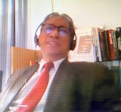10] Decrees from the Ottoman Tanzimat
Decrees From the Ottoman Tanzimat
by Marco Mua
The Tanzimat was an Ottoman reform movement that occurred between 1839 and 1876. The Tanzimat reforms were known as a reordering. These reforms included civil, economic, educational, and politial decrees within the Ottoman empire. Ottoman reforms were brough on by Ottoman bureaucrats familiar with developments in the West. These reforms aimed at creating a centralized Ottoman administration. This was very shrewd so that the Ottoman empire could try and maintain control over it’s expanding empire. Of course, the Ottoman empire eventually collapsed under its own weight!
In order to centralize control, the Ottoman empire conducted tax assessments, employed tax collectors, secured land titles, and revamped the courts. Of course, tax collection is the key to maintaining and expanding the empire thru the collection of revenue.
In order to solidify and legitimize the empire, the Ottomans realize that they have to keep the majority of it’s citizens happy. If the citizens are happy, then they can further produce revenue for themselves, and of course the empire. This sounds like America! As a way of protecting the people, the Ottoman Empire issued the Ottoman Bill of Rights in 1856. This showed the willingness of the Ottoman state to embrace and protect it’s non-Muslim population as full citizens. There was strong protection of persons and property during this reform period. It was also legal for foreign ownership.
Three main parts of the reform movement are summarized in the Gulhane Proclamation of 1839:
1. Guaranty insuring to our subjects perfect security for life, honor, and fortune.
2. Regular system of assessing and levying taxes.
3. Levy of troops. Strong property rights. Public servants must receive a good salary.
In conclusion, I feel that the Ottoman reform movement was an excellent way to improve living standards within the empire. If you want to improve a nation or an empire and increase prosperity, the nation must start by protecting the rights of it’s citizens. Without strong protection of property rights, where is the incentive to work hard and build? The protection of property rights greatly increase prosperity and the overall national economy. That was a great aspect of the Ottoman reform movement.
Currently, the poorest nations in the world include those nations who have little to no property right protection. The Ottoman reform movement knew that the best way to solidify their empire was by protecting and enhancing the rights of the people. This was shrewd. This was most impressive since this empire was constantly being weakened by powerful British imperial ambitions.
In the face of the British threat, the Ottomans were able to build a modern transportation, communication, and education system. Eventually, the British and other western nations dominated industry and technology, while a Muslim nation such as Ottoman Turkey, was left behind in technology capabilities. In the future, I want to study how and why this occurred, and what the Muslim world is doing to branch this divide.
by Marco Mua
The Tanzimat was an Ottoman reform movement that occurred between 1839 and 1876. The Tanzimat reforms were known as a reordering. These reforms included civil, economic, educational, and politial decrees within the Ottoman empire. Ottoman reforms were brough on by Ottoman bureaucrats familiar with developments in the West. These reforms aimed at creating a centralized Ottoman administration. This was very shrewd so that the Ottoman empire could try and maintain control over it’s expanding empire. Of course, the Ottoman empire eventually collapsed under its own weight!
In order to centralize control, the Ottoman empire conducted tax assessments, employed tax collectors, secured land titles, and revamped the courts. Of course, tax collection is the key to maintaining and expanding the empire thru the collection of revenue.
In order to solidify and legitimize the empire, the Ottomans realize that they have to keep the majority of it’s citizens happy. If the citizens are happy, then they can further produce revenue for themselves, and of course the empire. This sounds like America! As a way of protecting the people, the Ottoman Empire issued the Ottoman Bill of Rights in 1856. This showed the willingness of the Ottoman state to embrace and protect it’s non-Muslim population as full citizens. There was strong protection of persons and property during this reform period. It was also legal for foreign ownership.
Three main parts of the reform movement are summarized in the Gulhane Proclamation of 1839:
1. Guaranty insuring to our subjects perfect security for life, honor, and fortune.
2. Regular system of assessing and levying taxes.
3. Levy of troops. Strong property rights. Public servants must receive a good salary.
In conclusion, I feel that the Ottoman reform movement was an excellent way to improve living standards within the empire. If you want to improve a nation or an empire and increase prosperity, the nation must start by protecting the rights of it’s citizens. Without strong protection of property rights, where is the incentive to work hard and build? The protection of property rights greatly increase prosperity and the overall national economy. That was a great aspect of the Ottoman reform movement.
Currently, the poorest nations in the world include those nations who have little to no property right protection. The Ottoman reform movement knew that the best way to solidify their empire was by protecting and enhancing the rights of the people. This was shrewd. This was most impressive since this empire was constantly being weakened by powerful British imperial ambitions.
In the face of the British threat, the Ottomans were able to build a modern transportation, communication, and education system. Eventually, the British and other western nations dominated industry and technology, while a Muslim nation such as Ottoman Turkey, was left behind in technology capabilities. In the future, I want to study how and why this occurred, and what the Muslim world is doing to branch this divide.


0 Comments:
Post a Comment
Subscribe to Post Comments [Atom]
<< Home